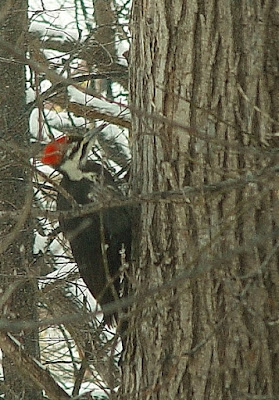We use a metal toy 'slinky' to keep squirrels away from the bird feeders. The feeder was blown off the metal pole that held it. But the slinky held on and gathered a coating of the wet heavy snow.
Slinkys have been discouraging squirrels for many years in my experience as a bird watcher. They try to get to the feeders again and again. But they are startled by the movement under their claws, or their feet get tangled up in the flat wire coil.





















